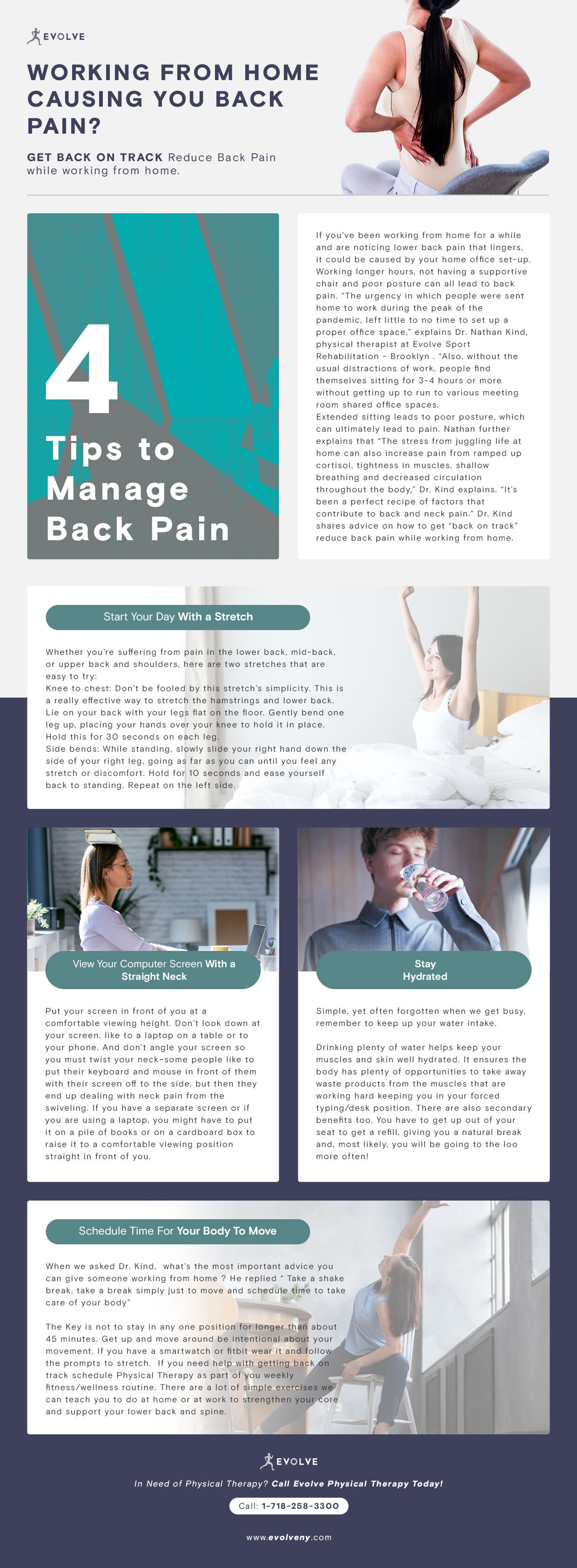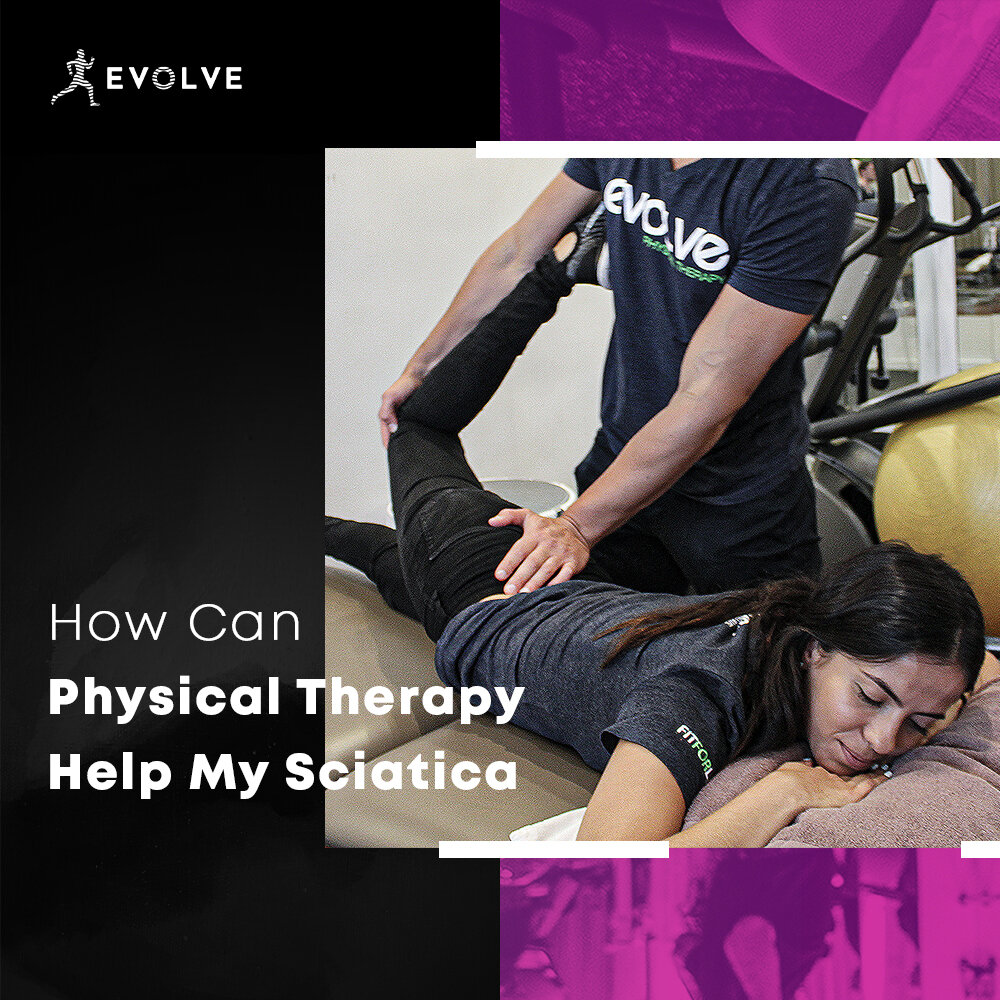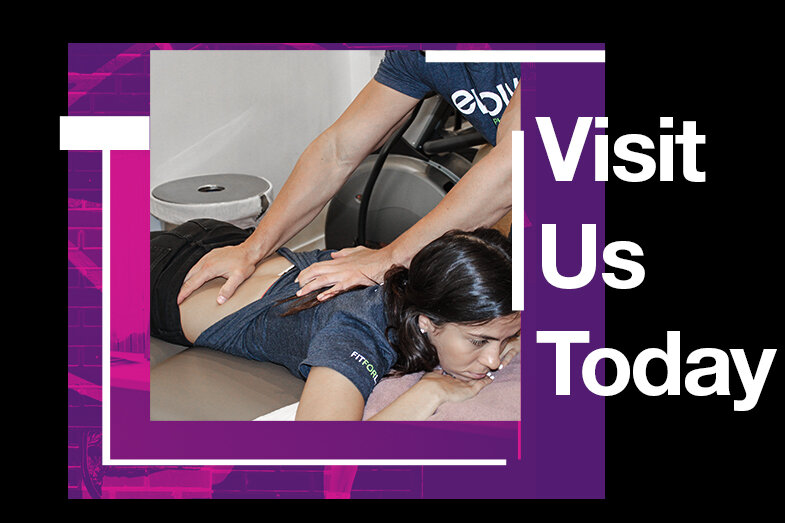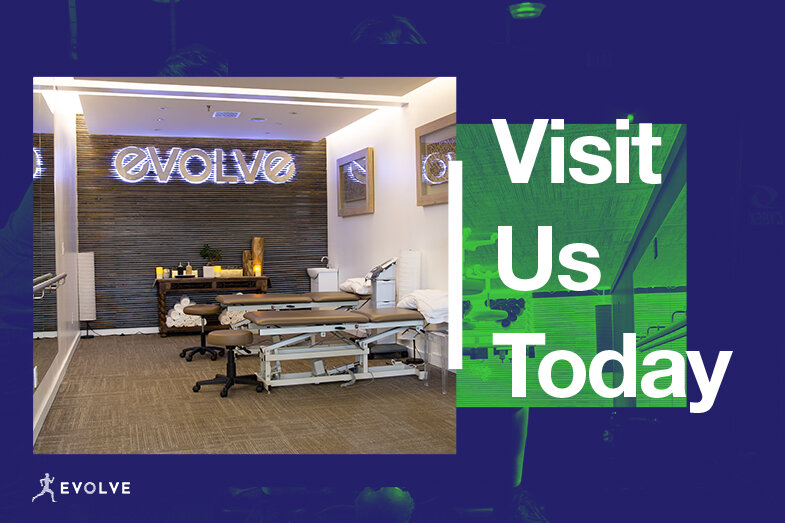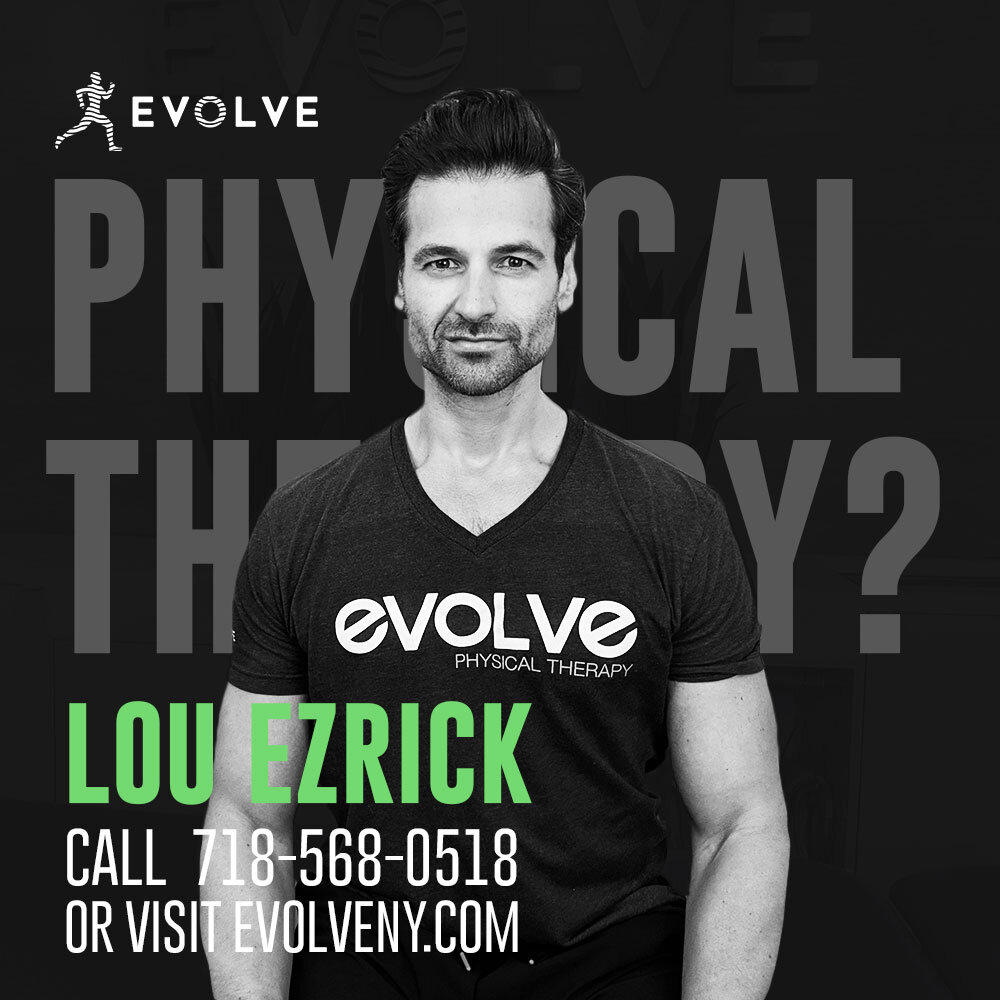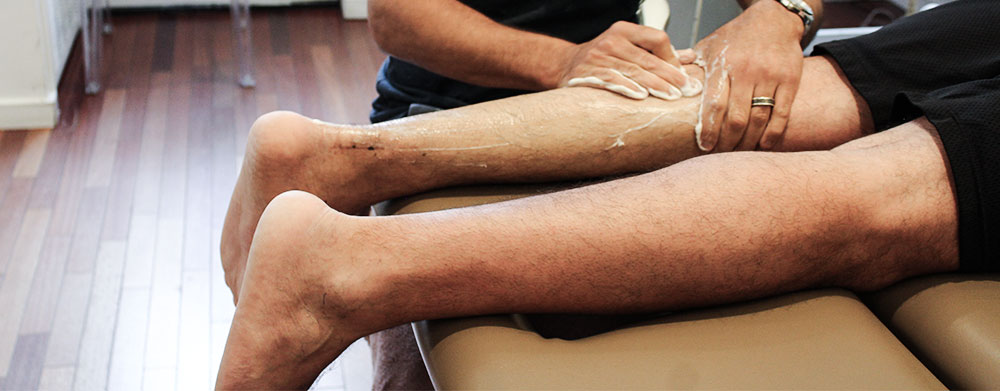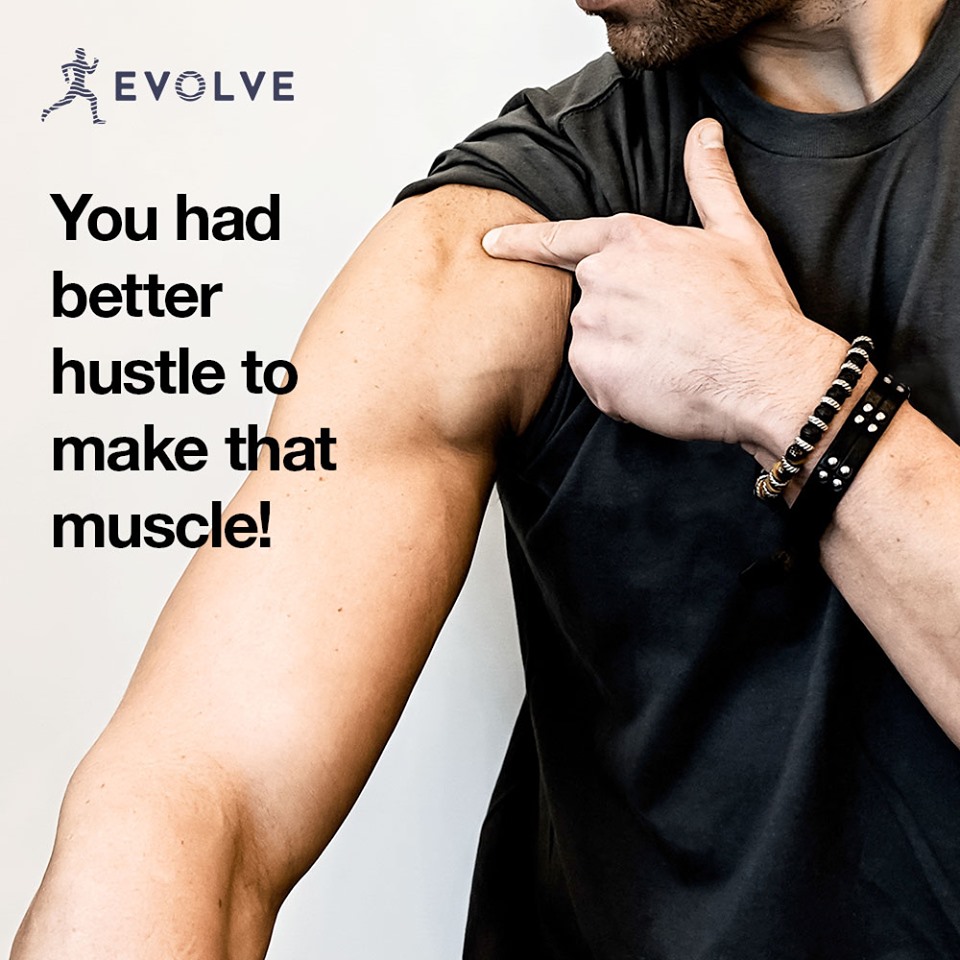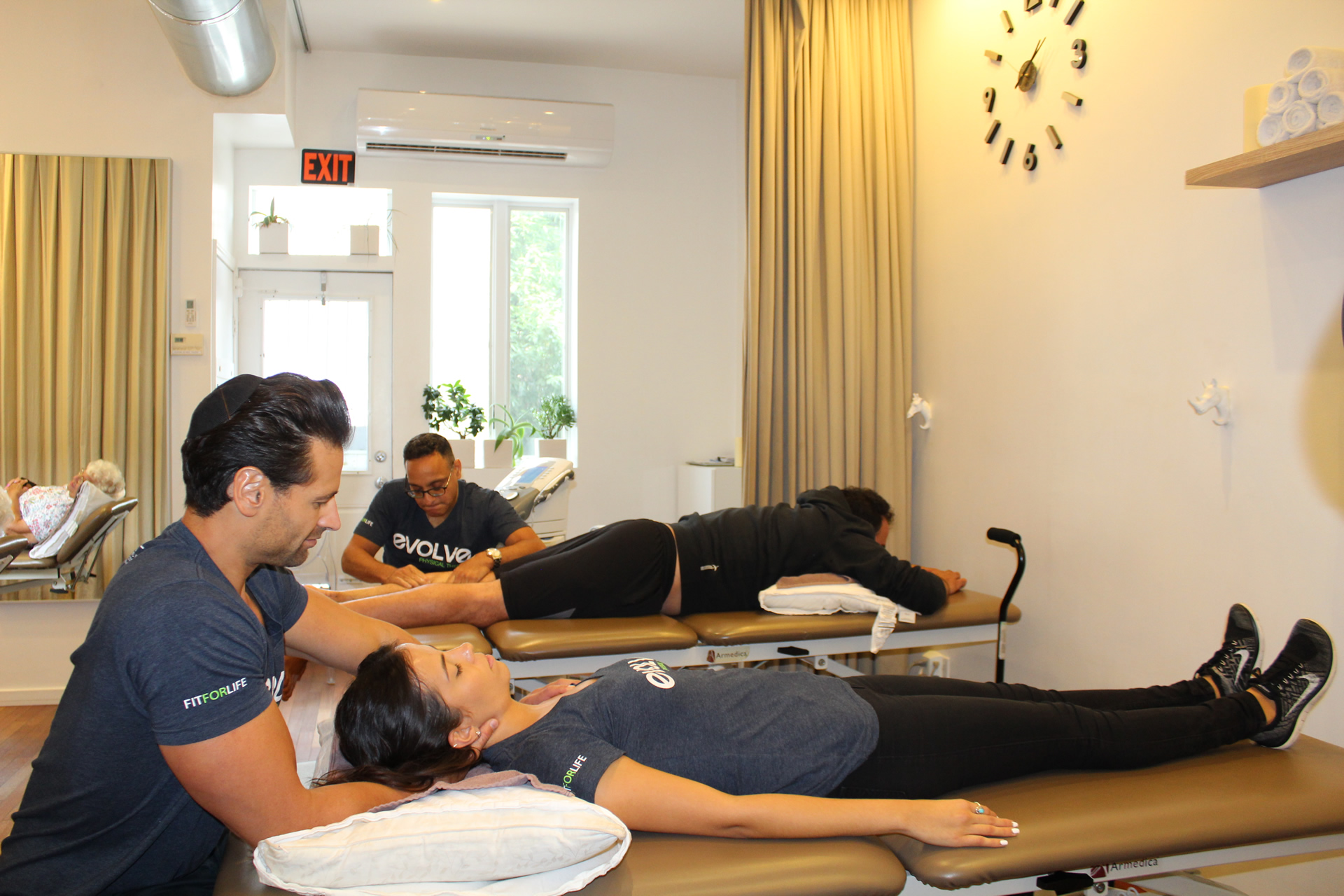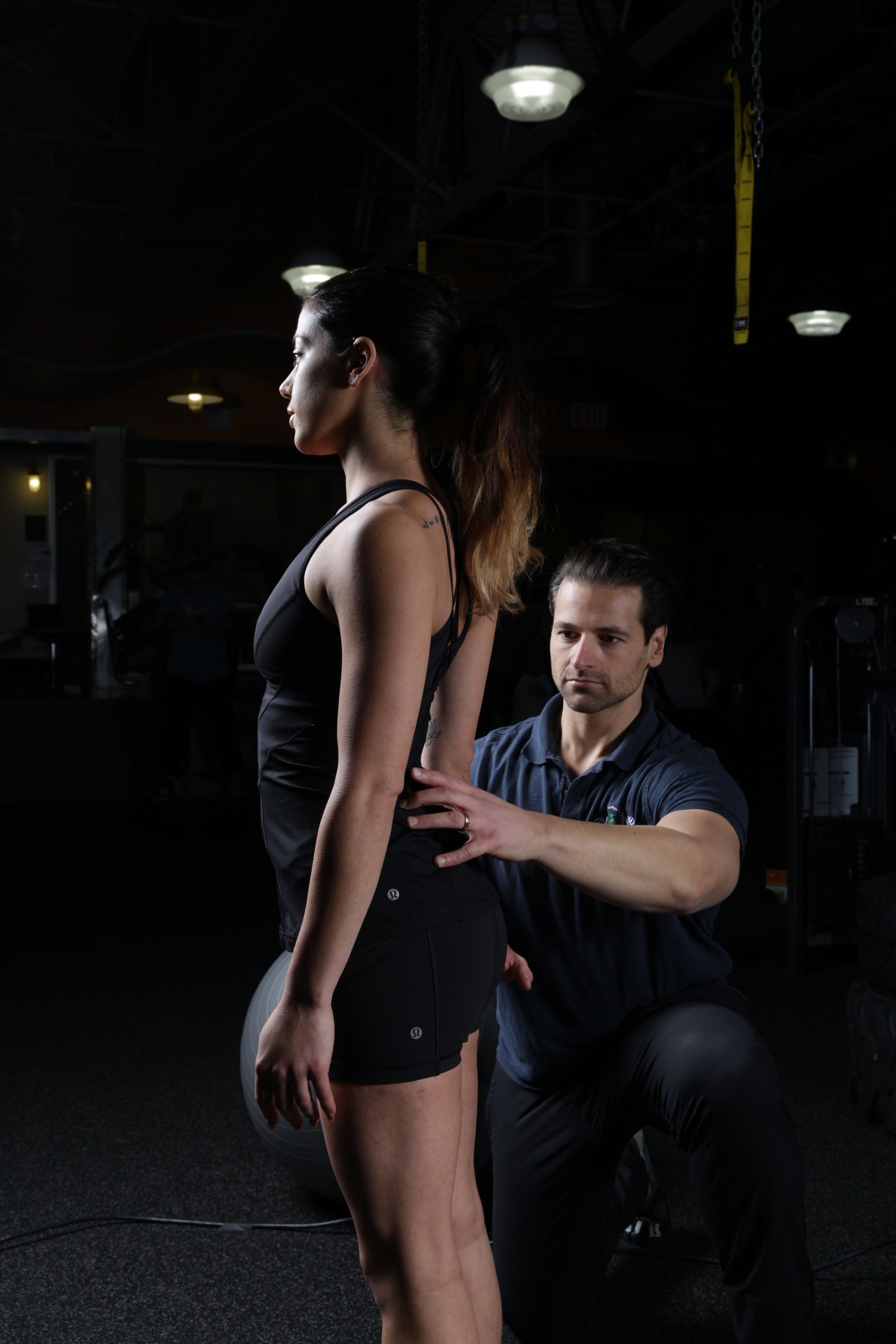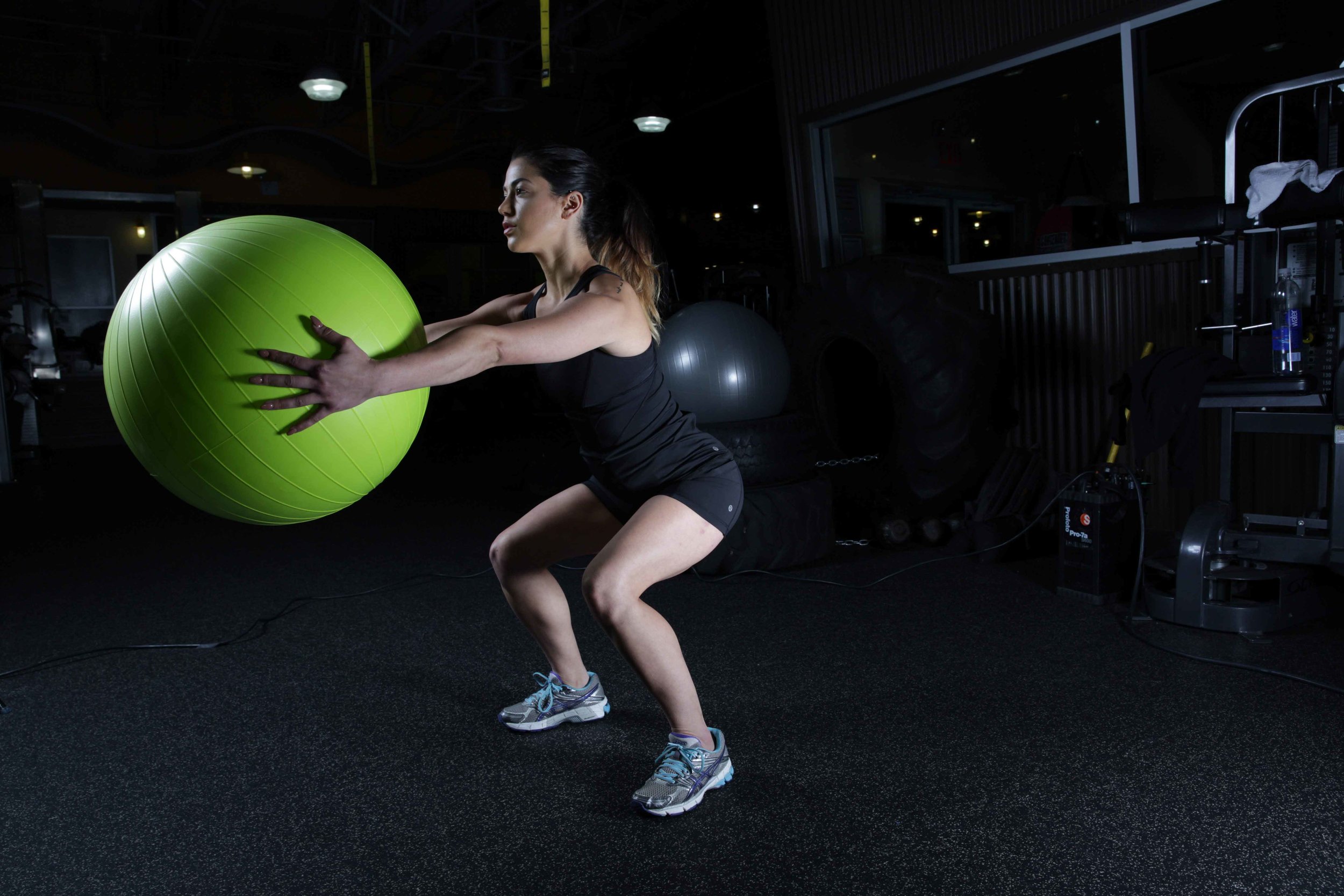
Brooklyn Physical Therapy News- Evolve NY
WORKING FROM HOME CAUSING YOU BACK PAIN?
WORKING FROM HOME CAUSING YOU BACK PAIN? GET BACK ON TRACK! Reduce Back Pain while working from home. 4 Tips to Reduce Back Pain-If you’ve been working from home for a while and are noticing lower back pain that lingers, it could be caused by your home office set-up. Working longer hours, not having a supportive chair and poor posture can all lead to back pain. “The urgency in which people were sent home to work during the peak of the pandemic, left little to no time to set up a proper office space,” explains Dr. Nathan Kind, physical therapist at Evolve Sport Rehabilitation - Brooklyn. “Also, without the usual distractions of work, people find themselves sitting for 3-4 hours or more without getting up to run to various meeting room shared office spaces.
GET BACK ON TRACK! Reduce Back Pain While Working from Home.
4 Tips to Reduce Back Pain
If you’ve been working from home for a while and are noticing lower back pain that lingers, it could be caused by your home office set-up. Working longer hours, not having a supportive chair and poor posture can all lead to back pain. “The urgency in which people were sent home to work during the peak of the pandemic, left little to no time to set up a proper office space,” explains Dr. Nathan Kind, physical therapist at Evolve Sport Rehabilitation - Brooklyn. “Also, without the usual distractions of work, people find themselves sitting for 3-4 hours or more without getting up to run to various meeting room shared office spaces.
Extended sitting leads to poor posture, which can ultimately lead to pain. Nathan further explains that “The stress from juggling life at home can also increase pain from ramped up cortisol, tightness in muscles, shallow breathing and decreased circulation throughout the body,” Dr. Kind explains. “It’s been a perfect recipe of factors that contribute to back and neck pain.” Dr. Kind shares advice on how to get “back on track” reduce back pain while working from home.
Tips on How To Reduce Back Pain And Sciatica While Working From Home-
START YOUR DAY WITH A STRETCH!
Whether you’re suffering from pain in the lower back, mid-back, or upper back and shoulders, here are two stretches that are easy to try:
Knee to chest: Don’t be fooled by this stretch’s simplicity. This is a really effective way to stretch the hamstrings and lower back. Lie on your back with your legs flat on the floor. Gently bend one leg up, placing your hands over your knee to hold it in place. Hold this for 30 seconds on each leg.
Side bends: While standing, slowly slide your right hand down the side of your right leg, going as far as you can until you feel any stretch or discomfort. Hold for 10 seconds and ease yourself back to standing. Repeat on the left side.
VIEW YOUR COMPUTER SCREEN WITH A STRAIGHT NECK!
Put your screen in front of you at a comfortable viewing height. Don’t look down at your screen, like to a laptop on a table or to your phone. And don’t angle your screen so you must twist your neck–some people like to put their keyboard and mouse in front of them with their screen off to the side, but then they end up dealing with neck pain from the swiveling. If you have a separate screen or if you are using a laptop, you might have to put it on a pile of books or on a cardboard box to raise it to a comfortable viewing position straight in front of you.
STAY HYDRATED!
Simple, yet often forgotten when we get busy, remember to keep up your water intake. Drinking plenty of water helps keep your muscles and skin well hydrated. It ensures the body has plenty of opportunities to take away waste products from the muscles that are working hard keeping you in your forced typing/desk position. There are also secondary benefits too. You have to get up out of your seat to get a refill, giving you a natural break and, most likely, you will be going to the loo more often!
SCHEDULE TIME FOR YOUR BODY TO MOVE!
When we asked Dr. Kind, what’s the most important advice you can give someone working from home ? He replied “ Take a shake break, take a break simply just to move and schedule time to take care of your body”.
The Key is not to stay in any one position for longer than about 45 minutes. Get up and move around be intentional about your movement. If you have a smartwatch or Fitbit wear it and follow the prompts to stretch.
If you need help with getting back on track schedule Physical Therapy as part of your weekly fitness/wellness routine. There are a lot of simple exercises we can teach you to do at home or at work to strengthen your core and support your lower back and spine.
Got Sciatica? Do you have an excruciating pain or electrical shock feeling running down your back and legs that just won't quit? Check Out Some of Evolve Physical Therapy’s Lower Back Stretches and Sciatica Specific Stretches…
Got Pain? Schedule a Consultation Today! Walk Ins Welcome.
Got lower back pain and/or Sciatica? Call us today to schedule an appointment! Call- 1-718-258-3300
About Evolve Physical Therapy in Brooklyn-
There’s physical therapy, there’s training, and then there’s EVOLVE. We use the science of bio-mechanics merged with fitness to help our patients get better and stay better!
First we evaluate, then we heal, then we strengthen our clients so they can reach their goals, feel better, and live happier lives. We do so by utilizing a range of core techniques and specialized treatments to reduce pain, improve mobility, enhance physical strength and deal with the underlying issues, not just the pain itself.
Multiple Locations!
How Can Physical Therapy Help My Sciatica?
Physical Therapy and Sciatica- Physical Therapy is beneficial for people with sciatica for many different reasons. Therapy can help manage inflammation, improve daily function, and prevent future exacerbations of symptoms. Sciatica is best defined as irritation or inflammation along the pathway of the sciatic nerve which branches from your lower back, through your hips and down each leg, innervating many muscles.
Physical Therapy and Sciatica
Physical Therapy is beneficial for people with sciatica for many different reasons. Therapy can help manage inflammation, improve daily function, and prevent future exacerbations of symptoms. Sciatica is best defined as irritation or inflammation along the pathway of the sciatic nerve which branches from your lower back, through your hips and down each leg, innervating many muscles.
Sciatica is described as pain on one side, from the low back to the buttock, down the back of the thigh and sometimes reaching the calf. This pain is often accompanied by numbness and/or tingling, may present as a mild ache, or a sharp burning sensation and may get worse with prolonged sitting. Increased abdominal pressure may make it worse, such as when sneezing or coughing. Although described as “sciatica”, the symptoms experienced will vary from person to person.
There are many possible causes for pain that travels down the leg. This may be described as “radiating pain”. However, true radiculopathy includes diminished reflexes, sensation loss/changes, and weakness. Some causes of sciatic symptoms include hamstring strains, a herniated disc, tissue degeneration, spinal stenosis, small stress fractures, sacroiliac joint dysfunction, and piriformis syndrome. Your physical therapist can determine the root of the cause by using special neurodynamic testing.
Without understanding the reason for your sciatic symptoms, it may be difficult to treat your symptoms with long term relief. A great physical therapist will give you a specific plan of care to address the cause of the pain with the goal of resolving this episode and preventing future exacerbations. Specific exercises will target underlying causes. For example, if the cause of the pain is from a herniated disc, exercises will include putting your spine in a position to encourage extension, taking pressure off of the disc and decreasing pain. Acute cases of sciatica usually get better with 4-6 weeks of physical therapy. Chronic sciatic pain that has lasted for over 8 weeks may take longer to resolve in PT.
You and your physical therapist will become a team in order to get yourself better. Being consistent with home exercises and focusing on correct form will take you a long way. This is key in getting the maximum benefits of your treatments.
Some general goals for physical therapy may include:
Increase core strength, including the low back, abdomen, glutes, and hips.
Stretching to loosen tight muscles, such as the hamstrings
Increase circulation with light aerobic exercises like walking, swimming, stationary recumbent cycling, and using the elliptical.
While you may be able to find temporary relief on your own with home remedies, a physical therapist at Evolve will work with you in order to treat the underlying cause of the issue and provide long term relief.
Click here to find out more information about physical therapy for Sciatica
About Evolve Physical Therapy in Brooklyn-
Got Pain? Schedule a Consultation Today! Walk Ins Welcome.
Brooklyn's Premier Holistic Physical Therapy Clinics- There’s physical therapy, there’s training, and then there’s EVOLVE. We use the science of biomechanics merged with fitness to help our patients get better and stay better!
First we evaluate, then we heal, then we strengthen our clients so they can reach their goals, feel better, and live happier lives. We do so by utilizing a range of core techniques and specialized treatments to reduce pain, improve mobility, enhance physical strength and deal with the underlying issues, not just the pain itself.
Multiple Locations!
Top 5 Exercises to Get Rid of Headaches
5 Best Exercises to get rid of headaches- While headaches can range from being a nuisance to being excruciating, there may be a way to find relief through movement, if you meet certain criteria. The vast majority of headaches are not due to underlying conditions. However, there are certain symptoms that should prompt you to see your doctor:
5 Best Exercises to Get Rid of Headaches
While headaches can range from being a nuisance to being excruciating, there may be a way to find relief through movement, if you meet certain criteria. The vast majority of headaches are not due to underlying conditions. However, there are certain symptoms that should prompt you to see your doctor:
Very severe headache that comes on suddenly
Headache made worse while coughing, sneezing, changing positions
Constant headache in the same location of your head
Headaches accompanied by tingling of the face, fever, chills, weight loss, night sweats
If you are not experiencing any of the above symptoms, you may be experiencing a muscle contraction headache. This is a type of tension headache correlated with clenching the muscles in the head. While the cause of this headache is unknown, there are some factors that may contribute as a trigger for them. Some of these include poor posture, anxiety or stress, dehydration, eye strain, and excessive alcohol consumption or smoking. These factors prompt the head muscles to tighten up, leading to pain.
You may also be experiencing a cervicogenic headache. These stem from upper cervical issues of the segments, ligaments, and muscles on the sides and back of your neck. These make up about 20% of people's headaches. They are commonly one sided and start from the back of the neck going up around the temples. These are a mechanical dysfunction, and can be treated with certain exercises.
Here are 5 exercises you can try at home to find some relief from headache pain caused by tension, stiffness, and tightness in the neck and shoulders:
Chin Tucks: These help reset the muscles in your head, neck, and shoulders. All you have to do is keep your neck in a neutral position, and tuck it back like you are giving yourself a double chin. Start by holding this position for 3-5 seconds, and do it for 5 repetitions. These can be done several times throughout the day.
Head rotations on a roll: This exercise works on the upper cervical vertebrae. Grab a thin foam roller, or cut a piece of a pool noodle and place it under your neck while lying down. Make sure it is high up where your head meets your neck. Gently rotate your head from side to side holding for 3-5 seconds on each side. If you start to get light headed, dizzy, or nauseous while doing this, stop immediately and go see your doctor as it can mean something more serious is going on.
Scapular Squeeze: If you are experiencing headaches, it may mean your chest area is tight and that your upper back is weak. To help with this, sit up and squeeze your shoulder blades down and back. Imagine there is an orange between your shoulders, and you are holding it in place, not allowing it to fall. Hold this position for 5 seconds and repeat for 5 rounds. You can do this a few times throughout the day. Make sure you are activating the muscles in your back to bring the shoulder blades closer together. The chest will open up to help strengthen the upper back muscles.
Pec Stretch: This exercise will help you stretch out your chest muscles, putting you in a better posture and reducing the chances of getting a headache. Sit up and clasp your hands together behind your back. Press down and out while pushing your chest out forward. Hold this position for 30 seconds and repeat for 3 rounds. Sometimes you may feel some tingling down your arms. This is okay if it goes away as soon as you come out of the stretch.
Thoracic roller: Headaches come from the neck, but may also come from the upper back, or thoracic region. Another way to relieve headaches is to loosen up that region of the spine. Rolling out the thoracic spine is a great way to do this. Place a foam roller on your mid back and wrap your arms around yourself like you are giving yourself a hug. Use your legs to roll up and down the muscles on the sides of your spine. Do this motion for 1 minute.
Want to learn more about how you can improve your posture to minimize headaches? Give us a call today to schedule a physical therapy appointment at Evolve.
About Evolve Physical Therapy in Brooklyn-
Got Pain? Schedule a Consultation Today! Walk Ins Welcome.
Brooklyn's Premier Holistic Physical Therapy Clinics-
There’s physical therapy, there’s training, and then there’s EVOLVE. We use the science of biomechanics merged with fitness to help our patients get better and stay better!
First we evaluate, then we heal, then we strengthen our clients so they can reach their goals, feel better, and live happier lives. We do so by utilizing a range of core techniques and specialized treatments to reduce pain, improve mobility, enhance physical strength and deal with the underlying issues, not just the pain itself.
Multiple Locations!
Can Physical Therapy Help With Rheumatoid Arthritis
Physical Therapy & Rheumatoid Arthritis- The word arthritis is an umbrella term used to describe painful and swollen joints. According to the World Health Organization (WHO), there are over a 100 types of arthritis, but one of the most common and a leading cause of disability, is Rheumatoid Arthritis.
Physical Therapy & Rheumatoid Arthritis
The word arthritis is an umbrella term used to describe painful and swollen joints. According to the World Health Organization (WHO), there are over a 100 types of arthritis, but one of the most common and a leading cause of disability, is Rheumatoid Arthritis.
What is Rheumatoid Arthritis?
Rheumatoid arthritis (RA) is defined as a long-term and progressive disease that mostly affects the joints of the hands and feet. It is also described as an autoimmune disorder, where the body attacks itself and causes the injury and swelling within the joint. This happens when the immune system fights healthy cells and mistakes them as foreign invaders. Doctors also say it is a systemic disease, which means it can affect the whole body.
R.A. Symptoms and Common Complaints
The most common symptom of RA is joint swelling, leading to the most common complaint, pain and loss of function. Since it is labeled as a systemic disease, it can affect more than one joint and become bilateral during a flare up. It usually affects the hands and feet first, but can also progress to big joints like the hip and knee, making it difficult for a person to stand or walk. Other signs of RA include:
1. Joint deformity, especially in the tips of the fingers or toes
2. Fever and a general feeling of being unwell
3. Sudden loss of function and mobility due to severe pain
It is difficult for a doctor to diagnose RA in its early stages, but it is imperative to start treatment and physical therapy once a diagnosis has been made. When you consult a doctor, you will likely undergo several tests to confirm if you have RA. There are numerous other types of arthritis, so your doctor will follow diagnostic criteria to be certain of your diagnosis. Your doctor also has to make sure to distinguish it from other conditions such as gout or osteoarthritis, as those need different management. A proper diagnosis will entail the appropriate treatment for you.
Physical Therapy for Rheumatoid Arthritis
Rheumatoid Arthritis runs in the long term, meaning it will have relapse and remission phases. Physical therapy teaches you how to manage your symptoms whenever they are present. It also teaches you ways to protect your joints so that they can be preserved and prevent damage as much as possible. When symptoms are not present, the goal of therapy is to maintain and improve the status of your joints and muscles.
Physical therapists make use of hot and cold compresses to relieve joint pain and lessen swelling. When there is excessive swelling, massage and other manual therapy techniques are used by therapists. You will be given range of motion exercises, requiring you to move the affected joint gently within a certain degree. If you are able to tolerate it, simple and gentle strengthening exercises called isometrics are taught. These exercises are used to maintain the integrity of the muscles around the affected joint. Immobility is one of the disabling causes of RA. To prevent this, light aerobic activities is given to a patient. Frequently, bicycles or ergometers are used for this exercise.
Physical therapists will also teach you how to move about your home and in any environment. For example, if the RA affects your knees it may be difficult for you to climb the stairs or hop in the car. Your therapist may recommend an assistive device, and teach you efficient ways to get around without getting tired or feeling pain.
Rheumatoid Arthritis Home Remedies
Here are some strategies to help manage RA symptoms:
1. Rest during a flare up, while still moving at a tolerable pace.
2. Strive to have a balanced diet of fruits, vegetables and meat to help maintain good weight so as not to stress the joints.
3. Applying heat or cold to painful joints to decrease swelling. This will help you maintain your mobility.
4. Exercise when you are in remission, or when symptoms are mild. Your muscles can get affected easily during a relapse, so it’s important to keep them healthy and in good shape.
The Takeaway…
Rheumatoid arthritis is a chronic and painful condition that can easily make it difficult for you to perform your daily tasks. It is important to consult a physical therapist once symptoms arise. The earlier you get into arthritis physical therapy, the easier it is to cope with this condition.
Click here to find out more information about our RA physical therapy services
Evolve NY's Holistic Physical Therapy Services in NYC
Physical Therapy Services with Evolve - Are you looking for a physical therapist who not only creates a customized treatment plan, but also focuses on finding and treating any underlying health issues that you may have? At Evolve, we are a physical therapy clinic that values individualized treatment and a holistic approach.
Physical Therapy Services with Evolve
Are you looking for a physical therapist who not only creates a customized treatment plan, but also focuses on finding and treating any underlying health issues that you may have? At Evolve, we are a physical therapy clinic that values individualized treatment and a holistic approach. With our 3-step process we will focus on evaluation, healing, and strengthening. We provide dynamic physical therapy so you can be fit for life.
If you are in need of immediate physical therapy services, please call- 1-718-258-3300
Below is a comprehensive list of our available services and treatment plans:
Manual Physical Therapy:
Manual physical therapy is a type of treatment that utilizes soft tissue techniques to relieve tension in damaged tissue. This type of therapy will be initiated at your evaluation and continued over the course of your physical therapy. It has proven to be able to decrease back pain, muscle spasms, and joint dysfunction. Click here to find out more about our manual physical therapy services
Prehabilitation:
Prehabilitation or prehab is used to help prevent an injury before it occurs. It is also used prior to having surgery to speed up recovery times. At Evolve, we use postural correction, functional strengthening, and mobility drills to address asymmetries, prevent injury, and optimize performance.
There are many ways that prehabilitation can benefit you. These would include but are not limited to: help to correct muscle imbalance, improve flexibility, fix joint alignment, normalize the stability of your core, and it can also help to improve the overall endurance of your muscles. Click here to find out more about our prehab physical therapy services
Parkinson's Boxing Training:
Rocksteady boxing is used to help people who have Parkinson’s disease regain strength and mobility. These exercises the target gross motor movement, balance, core strength and rhythm have been proven to slow down the progression of Parkinson’s disease. The boxing moves are adapted and designed to help patients regain control of their range of motion, and improve overall quality of life.
At any stage of this disease, those who attend these boxing classes will find that they are able to regain and start to build up their strength and flexibility again. Along with the increased range of mobility perks, boxing training can also help you work out any pent-up stress. Click here to find out more about our Parkinsons Disease physical therapy services
Running and gait:
This is a form of therapy that helps people regain the ability to stand, walk, or run. It can also be used to help athletes preform their best, or recover from a sports related injury. To access where it may be best to start improving these areas, your physical therapist may have you walk or run on a specialty treadmill that captures your movements. This allows them to point out what needs to be improved, and start to implement a treatment and recovery plan. Click here to find out more about our runners physical therapy services
Pediatric PT and Adolescent:
We have a dedicated team of therapists who specialize in physical therapy for pediatric and adolescents. We can implement therapy programs to meet all your family’s goals and help improve function and mobility for your children with our innovative physical therapy programs. Our creative and fun techniques will be a hit with kids as well as teens. Contact us for a consultation today to discuss available treatment options. Click here to find out more about our pediatric and adolescent physical therapy services
Schroth Method:
The Schroth Method directly accesses spinal movement and muscle tightness caused by scoliosis. With the Schroth method, we want to de-rotate, elongate, and stabilize the spine. This therapy will help restore muscle memory, posture, and alignment. Since Scoliosis is unique for anyone with the condition, our highly skilled therapists will develop a custom plan to fight back against your scoliosis, and help to prevent further rotation of your spine. Click here to find out more about our scoliosis physical therapy services
Hand Therapy:
By utilizing hand therapy, you can treat unique muscle groups, tendons, and ligaments. This kind of treatment can help you develop and regain your fine motor skills in your fingers, hands and wrists. Patients who qualify for hand therapy may have had a sports injury, or an accident that has caused them to lose mobility and function of their hands. Click here to find out more about our hand physical therapy services
TMJ Dysfunction Treatment:
We can help correct TMJ without surgery with our treatment plans. At Evolve, we can begin to heal issues with your temporomandibular joint that connects your jaw to your skull. Based on your current condition, we will develop a plan to help eliminate jaw pain associated with TMJ. The following are a few types of therapy that can be used to relieve this kind of pain: manual therapy, low-load exercises, and specialized pain treatments. Click here to find out more about our TMJ physical therapy services
Soft Tissue Therapy:
Here at Evolve, for musculoskeletal injuries, we use instrument-assisted soft-tissue mobilization (IASTM) to heal muscles and joints that cause pain during movement. This will improve range of motion, strength, and pain perception.
Here are a few reasons we utilize soft tissue therapy:
Soft Tissue Therapy can improve your range of motion
Reduce swelling and decrease pain
Reduce any adhesions that have formed
Prevent scar tissue build up
Lengthen muscles and tendons
Restore mobility and functionality of affected areas
There are many types of soft tissue techniques that may be incorporated into your treatment plan. Some of the following may be used during the course of your treatment: sustained pressure, direct oscillations, and parallel mobilization. Click here to find out more about our soft tissue physical therapy service
Post-surgical Care:
At Evolve, we are an outpatient facility. We align our treatment plans with our patients long term sports and activity goals. Our experienced physical therapists follow the latest and best protocols when creating your treatment plan. We will develop a close relationship with your surgeon and doctors so that we can work together as a team. It is important to us that you reach your highest fitness goals. With us, good enough just doesn’t cut it. Click here to find out more about our after surgery care physical therapy services
Orthopedic Physical Therapy- every physical therapist in our team is skilled to deal with injury or illness that affects your bones, joints, muscles, tendons or ligaments. These are mainly fractures, strains, sprains or postoperative conditions.
Our physical therapists will have you go through a thorough assessment before laying out a plan of treatment that is in line with your goals. You can expect to use modalities such as electrical stimulation, ultrasound and hot/cold application. We will teach you exercises that will help boost your healing, return you to function and to prevent re-injury. Click here to find out more about our
Orthopedic physical therapy can feel hard at first, as you start learning your exercises and moving through your pain. Treatment sessions are focused on rebuilding your flexibility, strength and function to help you get back on your feet. Click here for more information about our orthopedic physical therapy services
Occupational Physical Therapy- we also specialize in conditions related to daily function and movements and related injuries to your job. Certain hazards at the workplace can cause your body to feel aches and pains that make you susceptible to repetitive strain injuries-a.k.a- (RSI).
RSI, also known as work-related pain, is the general term used to describe muscle, nerve or tendon pain caused by repeated movements and overuse of our joints. It is also caused by improper posture, malalignment, vibrations, compressions, and other cumulative trauma. It can cover a wide range of painful musculoskeletal disorders.
At evolve, our physical therapists are well trained to spot these kinds of conditions and what could have possibly caused it. They will treat and manage your pain, give you exercises to stay pain free, and teach you strategies on how to prevent it from recurring. Click here to find out more about our occupational physical therapy services
Sports Physical Therapy- in sports, every athlete is prone to injury. In sports physical therapy, one of our our missions at Evolve Physical Therapy is to prevent and to minimize the risk for sports injuries.
Since our physical therapists are well versed in sports physical therapy, there are also trained to improve your form and performance through exercises that they provide. But sometimes, athletes do get injured, and again physical therapists are responsible to help them get back to the field.
Our physical therapists will often perform manual therapy, some soft tissue and deep tissue massage to loosen up muscles that stiffened because of an injury, after which you will start exercising to build your strength, endurance, balance and coordination. All of these exercises will help you return to your sport in tip top condition. Click here to find out more about our sports physical therapy services
Do You Need a Physical Therapist That Can Provide Specialized Treatment for Your Injury or Condition?
Regardless of your current condition we can formulate a plan to get you back to your best self. From accident to injury, we have physical therapy specialists that will dedicate themselves to your healing.
We have three prime New York City locations that are devoted to helping you recover. Our main physical therapy office is 3319 Avenue N, located in the heart of Marine Park in Brooklyn. This location features a tranquil and relaxing spa-like environment. Our second location, 6161 Strickland Avenue, is in Mill Basin’s Harbor Fitness, and is designed primarily for athletic patients. Our third and final location is 191 and 15th Street, located at Park Slope's Harbor Fitness. This facility is meant to push you even further in your physical therapy or fitness treatment. Contact us today to schedule your consultation with our team. Give us a call to schedule a consultation! 1-718-258-3300
About Evolve Physical Therapy in Brooklyn-
NYC's Premier Holistic Physical Therapy Clinics-
There’s physical therapy, there’s training, and then there’s EVOLVE. We use the science of bio-mechanics merged with fitness to help our patients get better and stay better!
First we evaluate, then we heal, then we strengthen our clients so they can reach their goals, feel better, and live happier lives. We do so by utilizing a range of core techniques and specialized treatments to reduce pain, improve mobility, enhance physical strength and deal with the underlying issues, not just the pain itself.
Multiple Locations!
Occupational Physical Therapy Services
What is occupational therapy? You may need to have occupational therapy if you have been injured, or have a chronic condition that affects your ability to complete daily activities. Your occupational therapist can not only treat your physical body, but your motor skills, emotions, and behavior as well. At Evolve, our team can help you reach all your daily living goals.
What is occupational therapy?
You may need to have to go in for occupational therapy if you have been injured or have a chronic condition that affects your ability to complete daily activities. Your occupational therapist can not only treat your physical body, but your motor skills, emotions, and quality of life as well. At Evolve, our team can help you reach all your daily living goals with our specialized occupational therapy services.
How can an occupational therapist help you?
Every occupational therapy plan will start with an evaluation of your health history, recent injuries, as well as what activities you need help with to perform your normal daily routines. We will use this information and work with you to create your individual occupational therapy treatment plan. An occupational therapist can also help you with the following:
Education on how to prevent injuries
We can educate you on your individual healing and treatment process
Train and educate you on how to complete daily activities correctly.
We can also teach you how to modify and adjust daily living activities to be more comfortable and ergonomically correct.
Click here to learn more about occupational therapy services in Brooklyn
Where can I find an occupational therapist?
Occupational therapists work with people of all ages. You can find them almost anywhere including:
Physical Therapy Clinics
Schools
Hospitals
Home Health Care
Assisted Living Facilities
Outpatient Medical Centers
What can an occupational therapist assist you with?
There are many different activities of daily living that they can help you relearn how to do. Below are a few examples
Dressing
Bathing
Eating
Functional Mobility
Communication
Meal Prep
Work Activities
And more!
What kinds of injuries or health problems can your occupational therapist help with?
Below are a few of the many different conditions that our team can assist with.
Arthritis: This is inflammation of your joints that causes pain and can get worse over time. An occupational therapist can teach you how to adjust your home or place of work to better suit your condition. They can also help you learn how to modify your everyday activities.
Stroke: When someone has a stroke, depending on how large it is and what area of the brain is affected, you may need occupational therapy to relearn daily activities.
Brain Injury: Depending on the severity and the type of brain injury that you have, you may need to work with an occupational therapist to relearn how to complete daily tasks and regain anything that you may have lost.
Joint Replacements: Having a joint replaced can be a painful process. You may realize after your surgery that you are struggling to regain the mobility that you once had. This is where physical and occupational therapy comes in. By taking part in a plan that has been customized to your abilities you can learn how to take your life back.
Multiple Sclerosis: If you have multiple sclerosis an occupational therapist can help you with daily living activities, home management tasks, and work related duties. Each of these can be tailored to suit your current activity levels.
Our Occupational Therapy Services Can Help You Check Off All Your Daily Living Goals
Here at Evolve, our highly skilled team is ready to help you find the strength and mobility you need to get your daily life back in order. With years of experience in the physical therapy field, we know that every body and situation is different. Our holistic approach to occupational therapy will find the solutions that you need. Contact us today to schedule a consultation.
Click here to learn more about occupational therapy services in Brooklyn
About Evolve Physical Therapy in Brooklyn-
Brooklyn's Premier Holistic Physical Therapy Clinics-
There’s physical therapy, there’s training, and then there’s EVOLVE. We use the science of biomechanics merged with fitness to help our patients get better and stay better!
First we evaluate, then we heal, then we strengthen our clients so they can reach their goals, feel better, and live happier lives. We do so by utilizing a range of core techniques and specialized treatments to reduce pain, improve mobility, enhance physical strength and deal with the underlying issues, not just the pain itself.
Multiple Locations!
Muscle Knots and Trigger Points
Muscle Knots, Trigger Points, and Physical Therapy- Did you know that our body can develop little bumps and knots within muscle tissue? You might even have one right now! If you’re experiencing body pain, chances are a muscle knot is causing your pain.
Muscle Knots and Physical Therapy
Did you know that our body can develop little bumps and knots within muscle tissue? You might even have one right now! If you’re experiencing body pain, chances are a muscle knot is causing your pain.
What are Muscle Knots?
Muscle Knots are those small, bump like areas in your muscles that cause pain when pressed or touched. They’re formally called a Trigger Point, and it literally does what it is called. It “triggers” a painful sensation where it is found, and can also affect nearby areas. The medical dictionary defines it as, a hyperirritable spot, a palpable nodule found in the taut bands of skeletal muscle. These annoying little spots can develop anywhere in our body, specifically in areas that are tense and tight. Aside from causing pain, muscle knots also commonly decrease a person’s range of motion.
What Causes Muscle Knots?
Muscle Knots or Trigger points are a result of muscle tension and tightness. Anyone can develop them, even an active athlete can have them. Muscle tightness usually comes from repetitive motion and activities. For example, if you are a weightlifter, you train the same weight lifting muscles everyday (and neglect some other muscles), therefore repeating the same movements every time you exercise. This tends to result in muscle tightness on certain areas. Muscle tension on the other hand can be a result of stress, such as when an office worker is stressed out about work. Muscle tension can also come from direct trauma or pain.
When muscles are tensed and tight, they cut off the blood supply of the microstructures within the muscle so all the dirty metabolites and waste by-products of these structures do not drain properly. Furthermore, muscle fails to relax after tensing up. This happens when a muscle is overworked, such as when we perform repetitive motions. The build up of these waste material is thought to be the muscle knot or trigger point. In another example, when the muscle experiences trauma, the muscle tenses, contracts and tightens as a means to protect itself from further injury. This is primarily a protective reaction mechanism of the body that blocks off blood supply, resulting in another accumulation of waste in an affected area. We must also remember that these occurrences are involuntary movement within the muscle. We cannot willfully control the chain of events that happen within these structures.
What are the signs and symptoms of a trigger point?
Symptoms usually start with a localized pain in a muscle when pressed and may cause pain in another area. For example, pressing a trigger point found in the shoulder may cause a headache. This is called “referred pain”. Typically, it starts with muscles that are involved in maintaining posture such as the neck, shoulders and low back, but may still develop in other muscles like the calf, quadriceps or hamstrings.
In your first session with a Physical Therapist, they normally would conduct an assessment and evaluation to determine what your body’s current status is. Your PT will perform a physical exam where he will try to find and palpate your muscle knots. He will pay close attention if he can elicit a muscle twitch, a transient, small or palpable muscle contraction. Oftentimes, a physical therapist can also elicit a jump sign in which an individual is startled by intense pain - this reflects the extreme tenderness of a trigger point. Aside from this, your PT will also check your range of motion because frequently, there is a limitation or a decrease in range caused by muscle knots. Lastly, your posture will also be examined, since trigger points are most commonly found in muscles involving posture.
Trigger points are commonly disregarded in a diagnosis. This is because there are no laboratory or imaging techniques that can confirm if you have a trigger point. Diagnosis is based purely on medical history, physical examination, and physical manifestations.
How Can a Physical Therapist Help?
The goal of physical therapy is to help you manage the pain and prevent it from recurring. After a thorough assessment, treatment usually starts off by breaking down the trigger point and releasing the muscles that are tight. There are a number of treatment modalities that your physical therapist can use to break down the knots. Manual techniques such as massage, stretching, manual therapy, soft-tissue therapy, active release therapy, and ischemic compression techniques are used to release the muscle and further break down the knot. A technique called the Stretch and Spray is also an option to use. With this technique, your PT will stretch the affected muscle and spray a vapocoolant spray - a cold modality - to numb the pain you feel when a knot is pressed or stretched. Your muscles will also need strength and re-conditioning after the muscle knot subsides as they are more than likely in a bad shape after all that tension and then sudden release. Your Physical Therapist will curate an exercise program based on his evaluation. Aerobic exercise should also be part of your rehabilitation program to increase your overall endurance.
If the trigger point causes too much pain, your PT can use electrical stimulation to lessen the pain. Doctors can also perform a steroid injection to the trigger point to lessen the pain and tenderness and make it easier for you to perform daily tasks.
What can you do at home?
Success of a physical therapy rehabilitation program also depends on your diligence to perform exercises given by your physical therapist. You should continue stretching and strengthening your muscles at home. You can opt to use hot or cold compresses and applying it to the painful area. If you can’t take the pain, there’s no harm in taking pain medications prescribed by your doctor. You can also try self massaging your painful muscles and joints, heating pads, cold compresses, or use use a tennis ball (any firm ball actually) or a glass bottle to massage your painful areas.
Trigger points form because of stress and tension, lessen these factors by learning relaxation techniques such as deep breathing exercises and meditation. Muscle tension and tightness results from improper posture and alignment, you should then adjust your ergonomics based on your needs. For example, fix your workstation at the office so you’ll be able to sit and work comfortably without straining your neck, shoulders and back. Live a stress-free life by getting more rest and sleep, eating healthy, engaging in regular physical activity like swimming, running, or cycling.
In Conclusion…
Muscle knots or Trigger Points, can potentially have a debilitating effect on our everyday function. Do not wait until the pain is unbearable before consulting a doctor or a Physical Therapist. Keep in mind, your physical therapy session is just one half of your road to recovery. Your physical therapist will show you how to eliminate, manage, and prevent trigger points from hopefully ever happening again.
Brooklyn's Premier Physical Therapy Clinics-
There’s physical therapy, there’s training, and then there’s EVOLVE. We use the science of biomechanics merged with fitness to help our patients get better and stay better!
First we evaluate, then we heal, then we strengthen our clients so they can reach their goals, feel better, and live happier lives. We do so by utilizing a range of core techniques and specialized treatments to reduce pain, improve mobility, enhance physical strength and deal with the underlying issues, not just the pain itself.
Got Pain? Schedule a Consultation Today! Walk Ins Welcome.
Multiple Locations!
Bicep Tendinitis and Bicep Tendinosis
What is bicep tendinitis? Biceps tendon injury causing severe bicep pain is very common in sports that include shoulder rotation and elevation of the arm above the head, such as baseball, basketball, swimming, tennis, etc. It comes as a risk with every activity demanding repetitive overhead movements.
How to Heal Bicep Tendonitis
If you are an athlete or regularly play sports, you may be familiar with the frustration and pain associated with the “dreaded” bicep tendonitis injury. When you get this injury, I know you want to fix it as quickly as possible. Just hold your horses for a minute though, if you don’t give yourself the proper amount of time to heal, you will potentially cause severe complications in the future.This does not mean you will be permanently on the bench, it just means that you will need to plan for a period of recovery before your return to the field.
This guide will help with explaining what happens to your body when you get bicep tendonitis and how my team of highly trained, experienced physical therapists and certified fitness specialists will help you overcome it.
What is bicep tendonitis?
If you get bicep tendonitis, you will most certainly know about it. The pain is noticeable when you use your arm, and often gets worse as you continue to use it. The damage from this injury affects the long head of the biceps muscle. There are several ways the biceps tendon can be damaged; from within the shoulder joint (SLAP lesion), or it can be damaged in the region where it passes through the intertubercular sulcus on the front side of the humerus, or you can have a ruptured tendon of the long head.
A bicep tendon injury causing severe bicep pain is very common in people that play sports which include shoulder rotation and elevation of the arm above the head, such as; baseball, basketball, swimming, tennis, etc. If you are repeatedly swinging a bat or throwing a ball, you are more likely to experience problems in the bicep and shoulder areas. The technical explanation for what is happening to your arm is that you are experiencing a shallow humerus intertubercular sulcus, which causes the tendon to pop out or sublux. Tendon subluxations cause damage and inflammation of the tendon and its sheath, something which is called Tenosynovitis.
Unfortunately, things can get a bit worse and you could develop secondary bicep tendonitis as a result of shoulder impingement syndrome or shoulder instability. In these cases, there is increased contact between the tendon and bone structures in the shoulder joint.
I know that the explanation of what is happening to your bicep can sound extreme, but it is not, and you will be able to fix it. The rest of this guide will show you how to recognize what is happening and what my team at Evolve Physical Therapy in Brooklyn can do to get you back on track as quickly as possible!
How do I know if I have bicep tendonitis?
You may have bicep tendonitis if you spot some of the following symptoms:
pain on the front side of your shoulder
pain during physical activity involving the shoulder joint and lifting heavy objects
increased sensitivity and palpitations of the muscle
However, to be certain that you are suffering from bicep tendonitis, we will perform a few tests, including:
Speed's Test – the patient flexes his or her shoulder by lifting the arm to a horizontal position in front of his body. The physical therapist applies mild to moderate resistance on the distal region of the arm, while the patient tries to hold the arm horizontal. If there is bicipital tendinitis, pain will increase during these activities, while constantly keeping our eyes focused on the position of the tendon in the sulcus, and its eventual subluxation.
Flexion of the elbow joint – this is the main movement done by the bicep, and if a patient experiences pain while performing this movement pattern, with or without applied resistance, it is possible that there is tendonitis of the long head.
Besides a regular physical examination, other diagnostic tests are required in order for us to be absolutely sure that we are dealing with tendonitis of this particular muscle. These tests include an x-ray and ultrasound scan of the shoulder joint. If it becomes clear that you have bicep tendonitis, we will not hesitate to get you started on a rehab program right away.
So how are you going to fix my bicep tendonitis?
As a reminder, in order for you to recover quickly from this injury, you must commit to not carrying out your normal work or sport activities. We have to work on your bicep injury intensively and give it the required rest and recovery that it needs to heal. The more committed you are, the easier this will go, I can promise you that. I expect you to ask me, "Am I going to get better soon?" or, "How long is this supposed to take?" We totally understand your frustration to fix the problem as quickly as possible. My team and I at Evolve are here to help you get through your physical therapy treatment program as quickly and efficiently as possible.
So this is how it will go. In the first phase of treatment, we must ease the pain and reduce inflammation of the long head tendon. To reduce pain, in the acute phase you must halt all activities demanding certain effort, especially those involving repetitive elbow and shoulder movement. You may experience some pain relief by pressing something warm on the painful spot. Heat can help in the healing process, increasing blood flow and dispersing algogenic pain substances from the area, but it is crucial that we apply cold procedures first, and then after about 72 hours we can proceed with heat therapy. We will administer cryotherapy, meaning we use cold compress packages and ice cube massages to reduce the inflammatory process affecting the tendon and its sheath.
After cryotherapy, we move on to the fun part, a kinesiotherapy and rehab program consisting of carefully dosed, isometric muscle contractions, followed by isotonic exercises and stretches at the end of each treatment.
In phase two, besides regular bicep tendonitis rehab, we focus on correcting muscular imbalances. It is essential that we evaluate the current strength of all muscle groups surrounding the shoulder, so we can improve the strength and overall stability of this joint. The last thing you want is to have the bicep tendonitis come back and that is why we must take this step to ensure we correct any problems before they come about again.
If you are an athlete and are recovering so you can get back on the field as soon as possible, we will also conduct a movement pattern analysis that is sport-specific, meaning it will help you overcome any irregularities that are causing you trouble and preventing you from playing.
What are the main goals of the rehab program?
Overall, I can guarantee that your rehab program will:
Strengthen your bicep muscle
Strengthen the muscles surrounding and supporting the shoulder
Increase your forearm strength
Activate and strengthen your rotator cuff muscles, which are of utmost importance for the dynamic stability of the shoulder joint
Complete stretching exercises after your workout to remain flexible at all times
How soon can you sign me up?
Today! You know that you can’t delay this any longer. Your bicep tendonitis will not improve by itself and it needs specific help to get it back to full health. If you are an athlete being prevented from playing due to this condition, then you really should have come to see me yesterday.
Don’t worry, the main point is that you act now and act fast. Come down to Evolve Physical Therapy in Brooklyn and we will start working with you immediately.
Call to Schedule a Consultation- 1-718-258-3300
Brooklyn's Premier Holistic Physical Therapy Clinics-
There’s physical therapy, there’s training, and then there’s EVOLVE. We use the science of bio-mechanics merged with fitness to help our patients get better and stay better!
First we evaluate, then we heal, then we strengthen our clients so they can reach their goals, feel better, and live happier lives. We do so by utilizing a range of core techniques and specialized treatments to reduce pain, improve mobility, enhance physical strength and deal with the underlying issues, not just the pain itself.
Multiple Physical Therapy Clinics in Brooklyn!
Call- 1-718-258-3300
The Benefits of Occupational Physical Therapy for the Workplace
An Occupational Therapist (OT) helps to access people suffering from physical or even mental illness. Your OT will work with you to evaluate your injury, formulate a therapy plan to help you reach your goals, and assist you with exercises and treatment during the duration of your injury.
The Benefits of Occupational Therapy for the Workplace
An Occupational Therapist (OT) helps to access people suffering from physical or even mental illness. Your OT will work with you to evaluate your injury, formulate a therapy plan to help you reach your goals, and assist you with exercises and treatment during the duration of your injury.
Occupational therapists often treat a large variety of work related injuries. Some of the most common of which are: Tendon inflammations, nerve disorders, and sprains. With the use of occupational therapy your therapist can help you recover from your injury and regain any skills that you may have lost along the way.
Call-1-718-258-3300
Occupational Therapy Services
Outpatient occupational physical therapy services can assist you if you have had hand, elbow, or wrist trauma, tendonitis, neurological trauma, concussions, and other work and sports related injuries.
Some of the following are commonly used services to assist in individual therapy treatment plans.
Using physical agent modalities
Training in adaptive techniques
Therapeutic exercises
Therapeutic activities including task simulation
And more!
Common Careers That See Frequent Workplace Injuries
Construction Workers: Due to the responsibilities of the job, construction workers often operate heavy machinery and do a lot of lifting. This type of movement can often result in injury that may require occupational therapy.
Subway Workers: General upkeep and maintenance of the subway system can take its toll on you as well. Not to mention put you in some dangerous situations that may result in injury.
Taxi Drivers: As a driver, there is always the possibility of getting into a wreck or a car accident.
Sanitation Workers: Workers in the sanitation field face the risk of physical injury on the job, and the possibility of an accident caused by reckless drivers that attempt to pass their trucks.
Factory Workers: Factories are not always the safest place to be employed. Whether you get injured while working with required machinery, or have health complications due to extreme environments, there is a possibility that you may need occupational therapy for your injury.
Nurses: Lifting and moving patients along with other physical day to day routines may cause you to get injured on the job as a nurse.
Police Officers: Officers are always on the move. Besides the dangerous aspects of their job, they also may be injured during a chase, or other daily duties, resulting in a sprain or worse.
Firefighters: As another job that requires a lot of movement and high risk conditions, firefighters may also be subject to injury while on the job.
Transit Workers: As driving requires prolonged periods of time sitting, holding a wheel, and potentially accidents; transit workers are common patients we see for occupational physical therapy.
Office Workers: Sitting at a desk all day long is by far healthy for anyone. From bad posture to carpal tunnel, office workers are also common patients at Evolve Physical Therapy in NYC.
Have You Been Injured on The Job? Physical Therapy and Workers Compensation Claims
An injury at work can often mean that until your recovery, you will be out of a job for some time.
As if your injury was not stressful enough as it is, now someone has to cover for you while you focus on regaining what you may have lost. Luckily, a lot of these industries with frequent on the job injuries often have plans in place for you if you have been hurt at the workplace. Some may even cover the cost for occupational physical therapy treatments .
At Evolve, we can work with you and your employer to help get you back on the job as soon as possible.
To learn more about our occupational therapy services, don’t hesitate to give us a call today- 1-718-258-3300
Brooklyn’s Premier Holistic Physical Therapy Clinics in NYC
Evolve Physical Therapy treatment programs- active release therapy, Parkinsons disease boxing training, running and gait physical therapy, pediatric and adolescent physical therapy, Schroth Method for scoliosis, hand physical therapies, TMJ therapy, soft tissue therapy, injury prevention therapy, manual physical therapies for different parts of the body, suffers from neck tension, muscle tightness, tight calf muscles, post surgery recovery and care, carpal tunnel, pre-hab physical therapy, occupational physical therapy programs, aquatic physical therapy, pain management, spine programs, sports physical therapy, return to work programs, and much more.
Call to schedule an appointment: 1-718-258-3300



